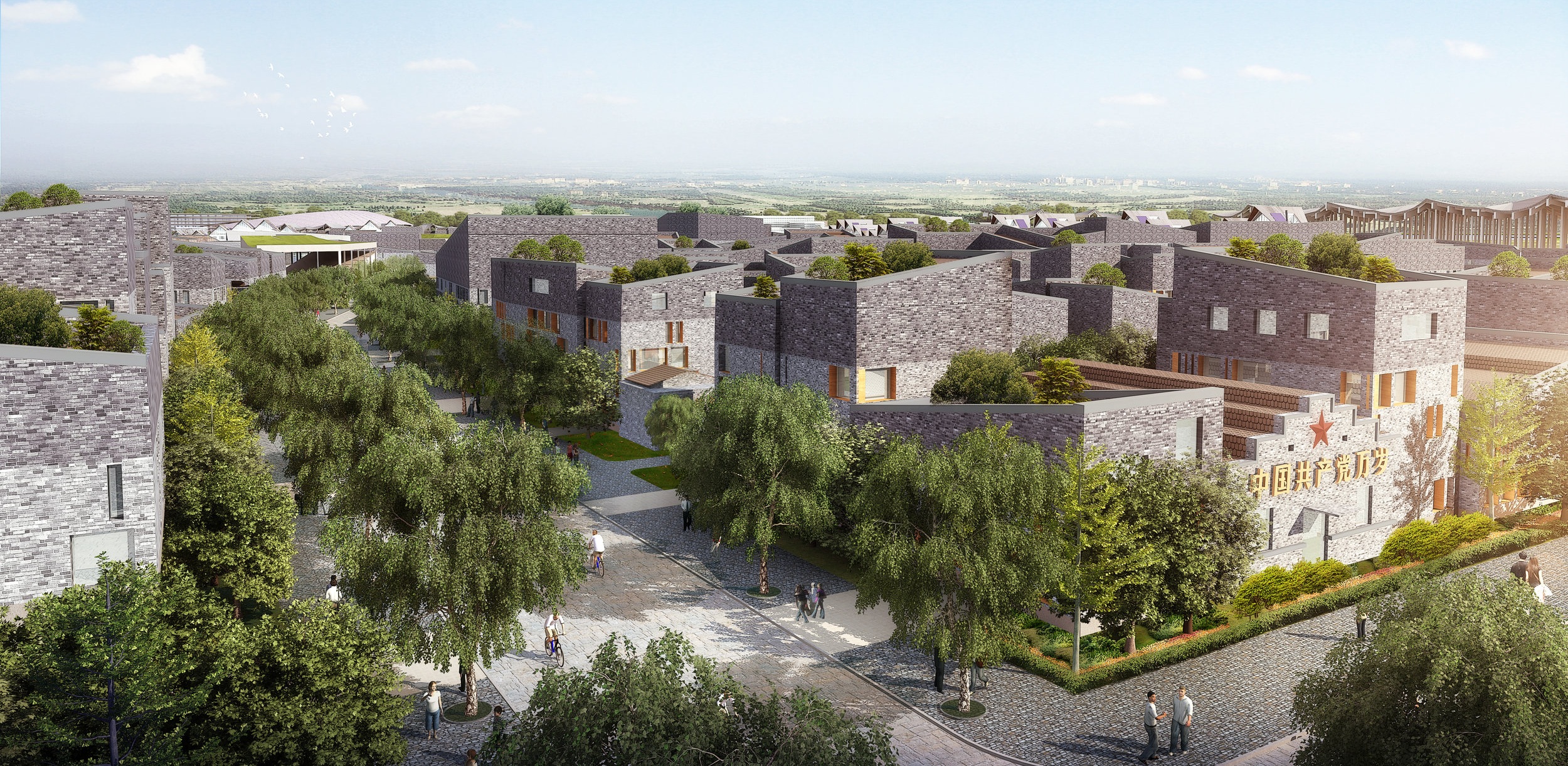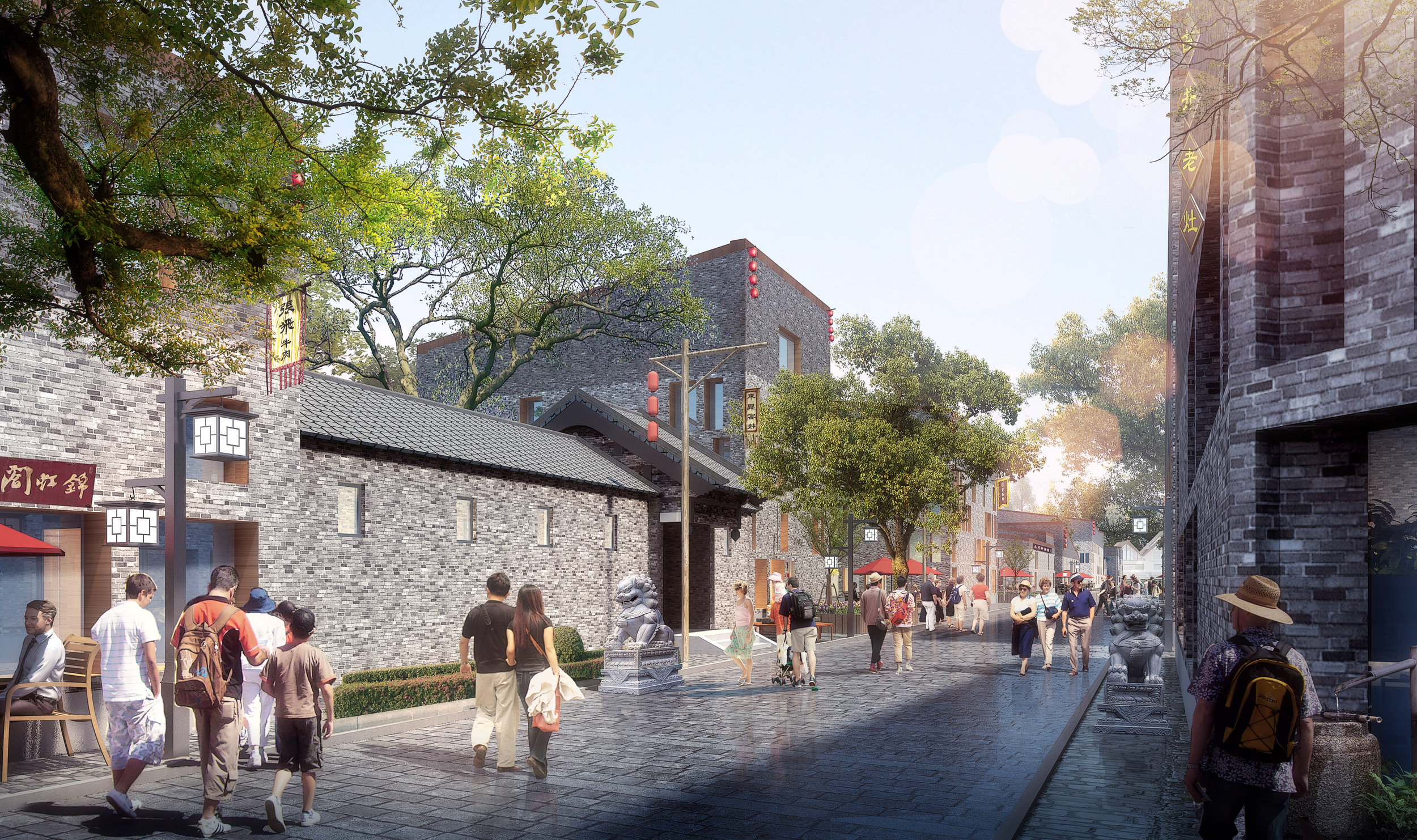The Anxin Archipelago
ANXIN, CHINA, 2018
Rising beside one of China’s most precious natural resources – Baiyang Lake, the great “kidney of north China” and the largest freshwater body on the North China Plain – Xiongan will be a riparian metropolis, threaded by an extensive river system that nourishes the vast wetland that has, for centuries, performed an indispensable environmental service, cleansing the converging waters and providing a rich habitat for innumerable species, including us.
But the 20th century has seen Baiyang become a virtual dead zone, starved of oxygen, polluted by human and industrial effluent and by agricultural fertilizer run-off. What is now a 366 square kilometer lake was ten times its current size at the end of the Qing dynasty in 1911.
Xiongan must dramatically reverse this pattern if it is to become “a model ecological civilization in the new era” and an exemplar of the “green transition approach”. Already, the giant south-north canal is adding 100 million cubic meters of water to the lake and its upstream sources. Industries discharging into the lake are subject to increased regulation. Shoreline garbage is being cleaned up. But far and away most critical is how the new city its and its millions of residents will act to radically capture, conserve, defend, and manage local water resources and to make the lake bigger and cleaner.
For this, Xiongan must become a truly amphibian city and find fresh and vital forms of living both with and on the water that grow from both sustainable practices and from centuries of magnificent examples in China and around the world: the water villages of North China (and South!), the canals of Suzhou, the below-sea-level urbanism of the Netherlands, the brilliance of Venice, the intricate grid of waterways in Bangkok, and so many other examples of life lived inharmony with water.
Our design responds to the site as one divided in two, with dense development spreading in segments east-west on the north and much sparser Green Peninsula to the south providing both a life-giving green lung and a unique village and outdoor lifestyle. This division is also at the core of both our own original proposal for Xiongan and the detailed official plan that now governs the city’s development.
Flowing through the peninsula, these waterways define a an archipelago that structures the landscape, based – like the traditional organization of the Chinese city - on the cardinal points of the compass and become gateway gardens to Anxin. The west gate celebrates the sun with its autumnal foliage; the east holds spring gardens and an ancestral forest; the north opens to winter gardens; and the south gate is the terrain of lush summer planting. At their center is a magnificent botanical wetland garden, a place of equilibrium, dotted with lakes and ponds celebrating the magical essence of Baiyang.
To achieve this we propose to expand the lake by re-routing the dike surrounding the city to create an aquatic site for a village of water villages – an auspicious eight islands lying between water and sky. Each would be distinct and independent but all are joined together – and to the Big City - by a system of bridges and causeways, by public transit including the city subway, slow-moving autonomous vehicles, by circulating ferries which stop at the water plaza of each village and – most important – by a filigree of paths for pedestrians, cyclists, logistics, and emergencies. Private vehicles will not be permitted at primary grade, to be left in the vast service podium beneath Xiongan City or in underground parking and service spaces beneath each island.
Rerouting the Xiongan dike, of course, exposes these new villages to flood risk. While we don’t see flooding as an enemy but as a natural event vital to recharging the health and fertility of the land and the water, protective measures must be taken. Seven of the eight islands are newly constructed, elevated above the flood stage and protected by sloping “eco dikes” that attenuate flooding energy, act as sponges, and ring each village with a rich, variegated, and working landscape. The historic town of Anxin - instead of being raised up - is surrounded by a thick stone dike, evocative of ancient practices and times. Within the town, a complex pattern of streets, lanes, and public spaces creates rich and unique variety, a paradise for pedestrians and – like all the Villages - a genuine neighborhood offering all the necessities for a rich daily life within an easy walk of home.
All eight villages will be highly sustainable. Rooftops – that most crucial feature of Chinese architecture - will harvest water and sunlight for power and heat and provide leisure spaces. Buildings with be well insulated and passively ventilated. Tree cover will offer shade and sequester carbon. Eco-dikes will extend the life-giving processes of the great wetland. And, each village will manage, bio-remediate and recirculate its waste water, via well-tested biological systems. Farmers working in the peninsular paddies and fields will also live in these villages and agriculture will be central to their economy, via the city’s fields, backyard gardens and roof-top greenhouses, small-scale food processing, and an abundance of restaurants and markets for both locals and visitors.
Thousands will be drawn to the Archipelago not simply by the unique architectures, water vistas, and intimate charm of these islands in the lake but also by their special lifestyles. Xiongan will be a city of innovation and creativity and the villages will be especially congenial to this. Just as much of the brain-storming and research that founded Silicon Valley legendarily took place in funky little garages, the islands will be dotted with flexible – and affordable – loft spaces to serve as labs, workshops, and incubators for individuals and small start-ups. These will also be congenial to an artistic community that thrives on both density and apartness to stimulate collaboration and possibility.
Overly rigorous zoning makes cities sterile, but cities in which knowledge, culture, and environmentally friendly production dominate can sustain far richer social and functional mixing: almost anything can sit happily next to anything else. The Villages will surely be places of blending, attracting a vibrant community of scientists, artisans, inventors, chefs, musicians, academics, sailors, ecologists, poets, individualists, and families seeking the slower pace of small town life. Their unique atmosphere and location will surely be magnetic for tourists, vacationers, and night-crawlers which, in turn, will drive the creation of hotels, recreational facilities, theaters and clubs, galleries, museums, conference centers, schools, marinas, cafes, and other infrastructures of pleasure and exchange.
Despite their ubiquitous mix and neighborhood structure, however, each island will have its core drivers, special functions, and attractions. In addition to historic Anxin Village we’ve designated a Campus Island, home to the Xiongan University of the Earth (XUE), a world class center for environmental research, a Resort Island, a Kid’s Island, a Conference Island, a Start-Up island, and a Gateway Island (a calm concentration of high-tech facilities) located adjacent to the university. Finally, we offer the Big Island, which – with its strong cross-axial boulevard - holds a special concentration of commercial and cultural activities, its own civic square, government offices, and a stadium.
Sweeping over the city, we see the relationship of the Village of Villages to Baiyang Lake, to the Green Peninsula, to the main body of Xiongan, and to its small town neighbors. We read the complex but legible pattern that mixes landscape and settlement and the unique form of each Island Village, and we see very clearly how the lake has begun to grow.
Circling the archipelago we arrive at the Anxin Marina and move along the flood wall around Anxin Village. We visit the big and busy waterfront public market and stop for lunch at one of the waterside restaurants overlooking the adjacent canal.
Refreshed, we pass into the heart of the Ancient City through a gateway in the low wall and find ourselves in a bustling town, blending new and old. Our path takes us along narrow lanes and intimate, human-scaled, streets, past loft buildings housing high-tech incubator and maker spaces, as well as a lively community of young and old. We pause in the main civic square - a social gathering space from which the subway offers a quick trip to the Xiongan Center - and re-enter the labyrinth, strolling northwards along historic Xiao Nan Street, with its small shops, restaurants, residences, and public spaces.
Passing back out through the Ancient City’s protective wall, we cross an elegant bridge to the Big Island, the largest of the villages and the most densely populated. Window shopping along its crowded main boulevard, we end our journey in lively plaza of the archipelago’s Cultural and Performance Center.
Credits: Jie Gu, Chu-Yun Cheng, Zhen Quan, Michael Sorkin, Makoto Okazaki, Ying Liu, Patrick Monte, Alihan Dumankaya, Shantanu Bhalla, Maria Villalobos, Pablo Ibero, Ning Ni.








